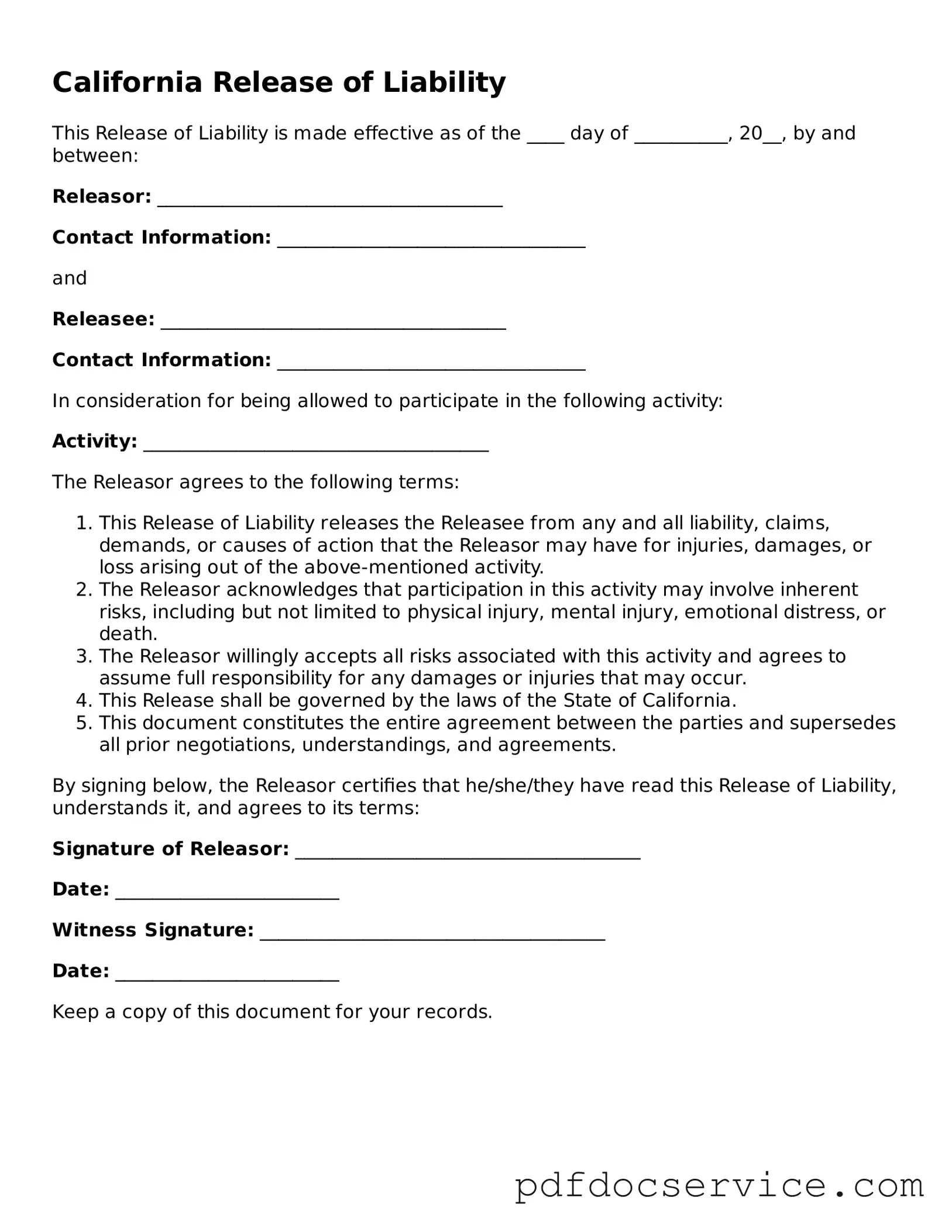Printable Release of Liability Template for California
The California Release of Liability form is a legal document that helps protect individuals and organizations from being held responsible for injuries or damages that may occur during activities. By signing this form, participants acknowledge the risks involved and agree not to hold the organizers liable. This form is commonly used in various settings, including sports events, recreational activities, and volunteer programs.
Open Release of Liability Editor
